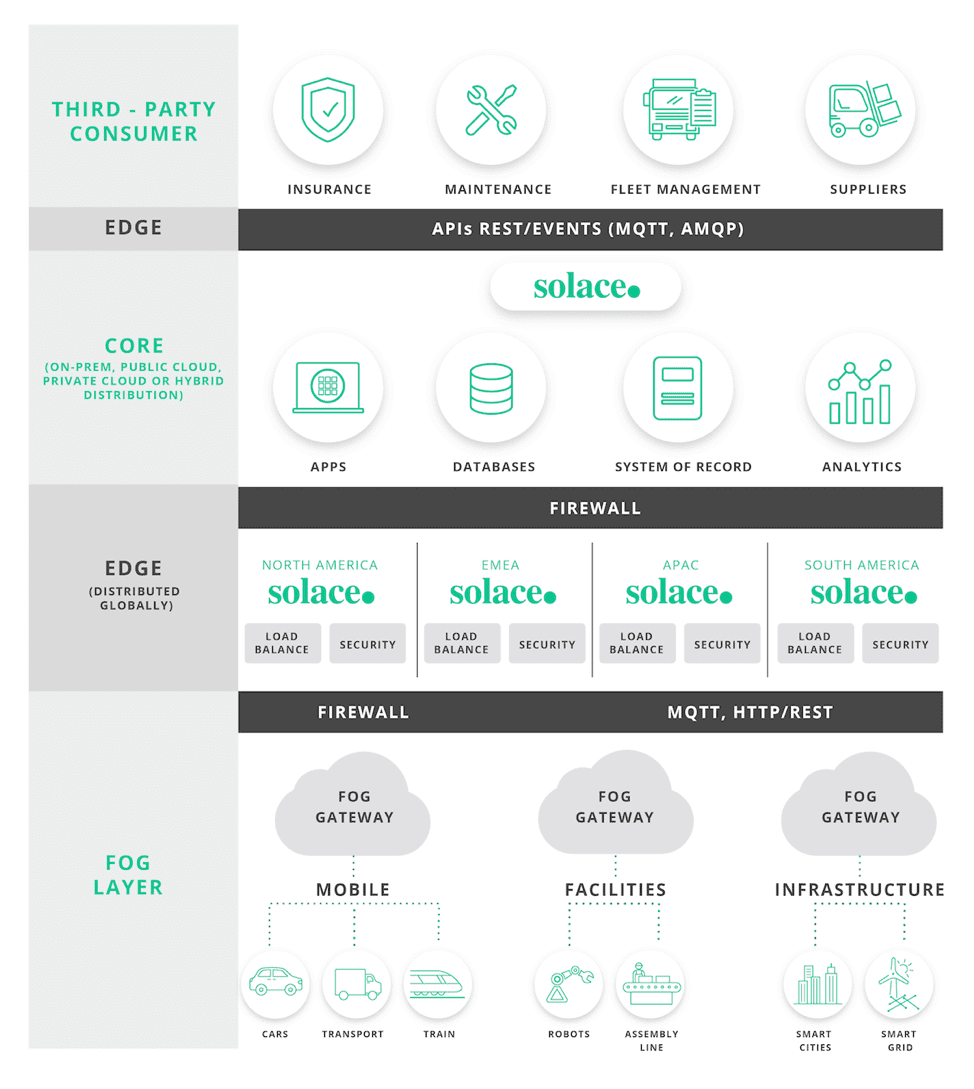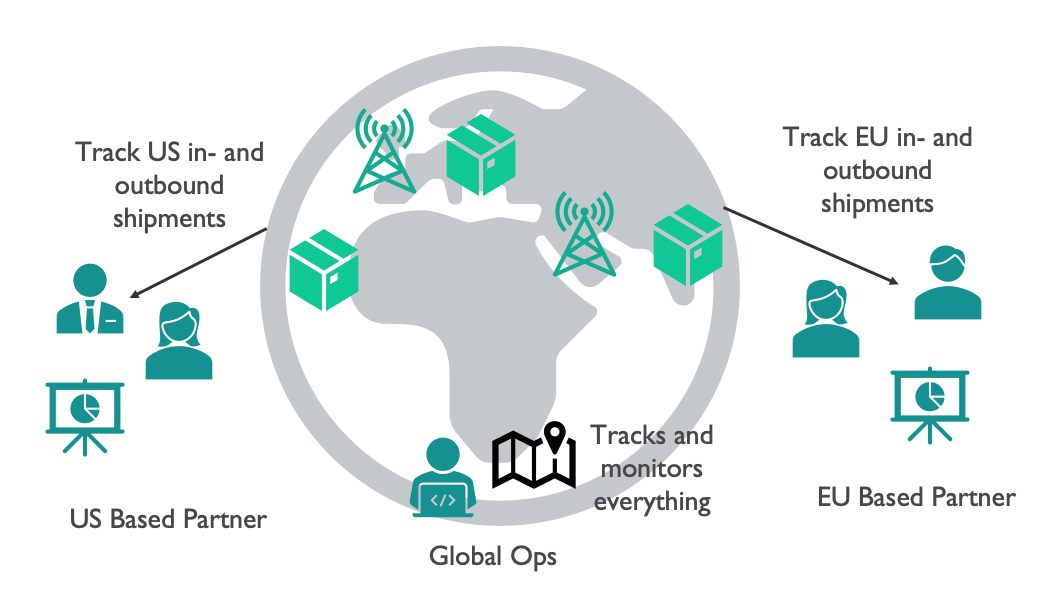The internet of events: The challenge of scaling up IoT architectures

Swen-Helge Huber of Solace
IoT networks which have any chance of true success depend on consistent connectivity. Without consistent connectivity and real-time data transmission across the network, says Swen-Helge Huber, director and principal architect IoT at Solace, the project is doomed to failure.
Connectivity stretches vastly beyond inter-device connections. If we look in detail at any Internet of Things (IoT) network, there are connected “things”: sensors, devices, edge gateways. Further down is the management infrastructure layer, which includes device management and security and access management systems, before moving even further down to the data infrastructure layer, tying in streaming analytics and machine learning. All of these layers then need to connect seamlessly to business applications, such as ERP systems, which uphold the entire organisation.
The tip of the iceberg
Beneath the connected devices, there is an intricate web of multi-layered connections. The actual device is the tip of the iceberg; the real value is what lies beneath. The challenge is not necessarily connecting Sensor A to Sensor B, but rather to connect Sensor A with machine learning capabilities at the data infrastructure layer.
The Internet of Things is becoming infinitely more complex with every advancement, and its environment increasingly convoluted as more technologies are integrated into these networks.
Looking at the situation as it is, the obvious question becomes: how can you connect these different elements across layers, geographies and public/private clouds – at scale? How do you respond when devices need a high degree of frequency, a low tolerance for latency, and a way to handle massive amounts of data travelling across the architecture?

This is where event-driven architecture technologies come in, providing connectors between the different layers.
An event mesh provides the infrastructure for real-time event streaming across an IoT network, creating a central pool where the events created by IoT devices are then transported to the rest of the infrastructure. This ensures high performance and low latency, finally making sure the end-users have a smooth experience.
Making an event of it: Smart cars
In the context of IoT networks, event meshes see new use-cases practically every day. For the automotive industry for example, and in particular with connected cars, the need for real-time event brokering is imperative, streaming information between the vehicle itself and backend interactions.
Smart cars are miles ahead of other industries experimenting with IoT projects, presenting a great example of the potential of their kind. Every time you give the command to open the boot of a connected car, an event is produced. With an event mesh infrastructure, this can be consumed in real-time. The button is pressed (event produced), the boot is opened (event consumed). There is a huge amount of back-end activity underneath this transaction, and events hardly happen one by one as in this example. Rather, a single smart car will be producing hundreds of these events per hour, and can afford no malfunction or slow responsiveness.
This seemingly insurmountable volume of data is efficiently and smoothly handled by event brokering technologies, which carry out these transactions in real-time, ensuring every piece works. No more desperate attempts to balance the shopping whilst opening the boot.
The case for CNI
In no industry/sector is it more imperative to have a clear insight into the IoT network than for critical national infrastructure. Pervasive connectivity across sensors ensures that operators have a clear insight into operations meaning that any faults/issues can be discovered.
An element of this comes down to predictive maintenance. This enables CNI operators and systems engineers to identify potential failures and monitor equipment so they can improve productivity and minimise asset downtime.
IoT sensors monitor things like vibration, temperature, noise, pressure, oil levels, and other variables that are important to monitor and predict. As one can imagine, this data will come in a variety of formats and can be stored in many ways, locally or in the cloud.

In an event-driven predictive maintenance model, events can be pushed from IoT devices to interested applications in a variety of environments in real-time. By enabling event-driven data flow, scalability, instant communication, and interoperability are made easier.
Scaling up IoT initiatives
Having an IoT project/initiative is all well and good, but being able to scale this at the same speed as the organisation expands and is subject to rising business and customer needs is imperative. Event mesh technologies play a pivotal role in helping IoT expand at pace with the business, connecting the wider enterprise across an increasing number of sensors and ensuring that connected devices remain fed with real-time data and can deliver the responsiveness the business needs.
When it comes down to it, what will define the success of IoT initiatives in the future will be their ability to scale to meet changing demands. This is what will cement event-driven architectures in the IoT ecosystem; the capability to drive real-time connectivity across any and every IoT network.
The author is Swen-Helge Huber, director and principal architect IoT, Solace.
Comment on this article below or via Twitter @IoTGN
